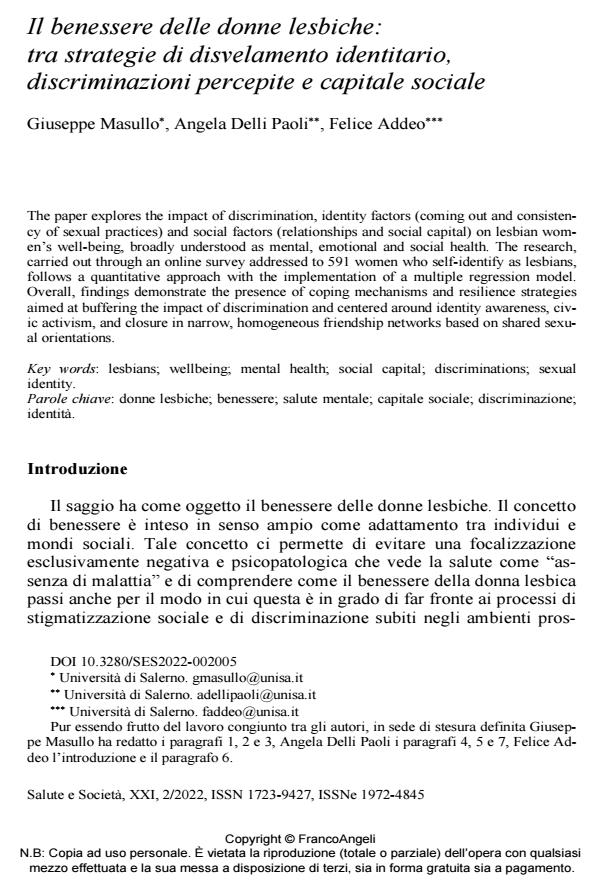Il benessere delle donne lesbiche: tra strategie di disvelamento identitario, discriminazioni percepite e capitale sociale
Titolo Rivista SALUTE E SOCIETÀ
Autori/Curatori Giuseppe Masullo, Angela Delli Paoli, Felice Addeo
Anno di pubblicazione 2022 Fascicolo 2022/2
Lingua Italiano Numero pagine 17 P. 50-66 Dimensione file 131 KB
DOI 10.3280/SES2022-002005
Il DOI è il codice a barre della proprietà intellettuale: per saperne di più
clicca qui
Qui sotto puoi vedere in anteprima la prima pagina di questo articolo.
Se questo articolo ti interessa, lo puoi acquistare (e scaricare in formato pdf) seguendo le facili indicazioni per acquistare il download credit. Acquista Download Credits per scaricare questo Articolo in formato PDF

FrancoAngeli è membro della Publishers International Linking Association, Inc (PILA)associazione indipendente e non profit per facilitare (attraverso i servizi tecnologici implementati da CrossRef.org) l’accesso degli studiosi ai contenuti digitali nelle pubblicazioni professionali e scientifiche
The paper explores the impact of discrimination, identity factors (coming out and consistency of sexual practices) and social factors (relationships and social capital) on lesbian women’s well-being, broadly understood as mental, emotional and social health. The research, carried out through an online survey addressed to 591 women who self-identify as lesbians, follows a quantitative approach with the implementation of a multiple regression model. Overall, find-ings demonstrate the presence of coping mechanisms and resilience strategies aimed at buffer-ing the impact of discrimination and centered around identity awareness, civic activism, and closure in narrow, homogeneous friendship networks based on shared sexual orientations.
Parole chiave:donne lesbiche; benessere; salute mentale; capitale sociale; discriminazione; identità.
Giuseppe Masullo, Angela Delli Paoli, Felice Addeo, Il benessere delle donne lesbiche: tra strategie di disvelamento identitario, discriminazioni percepite e capitale sociale in "SALUTE E SOCIETÀ" 2/2022, pp 50-66, DOI: 10.3280/SES2022-002005